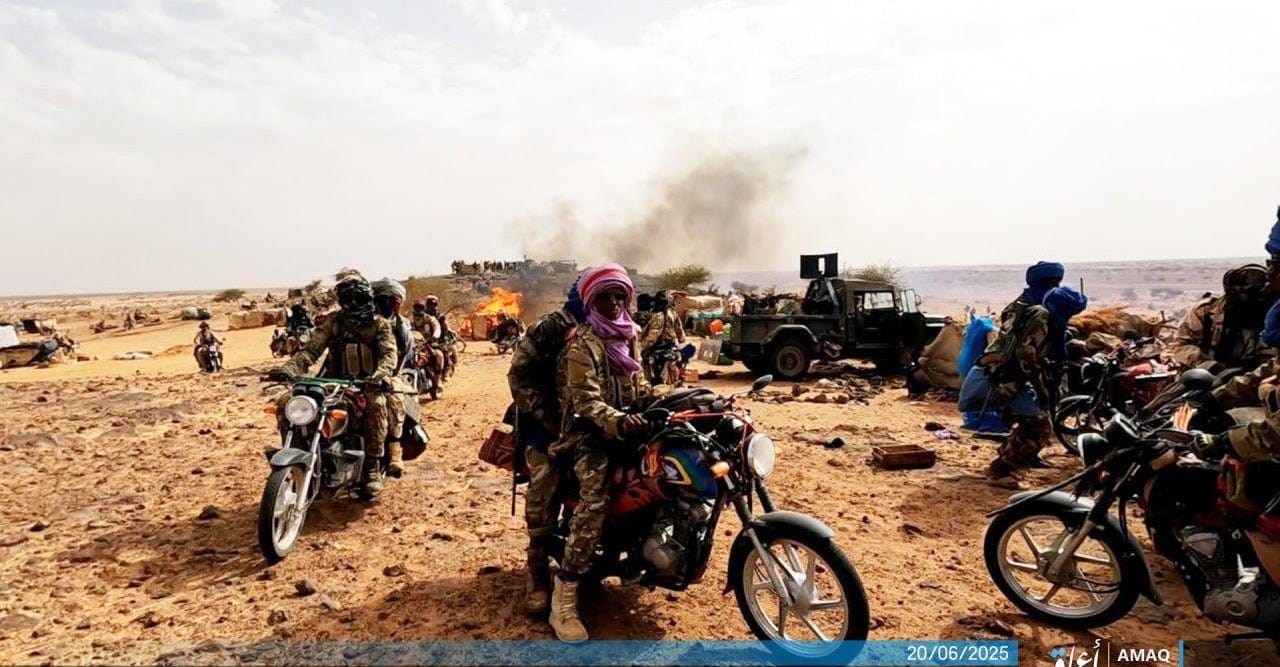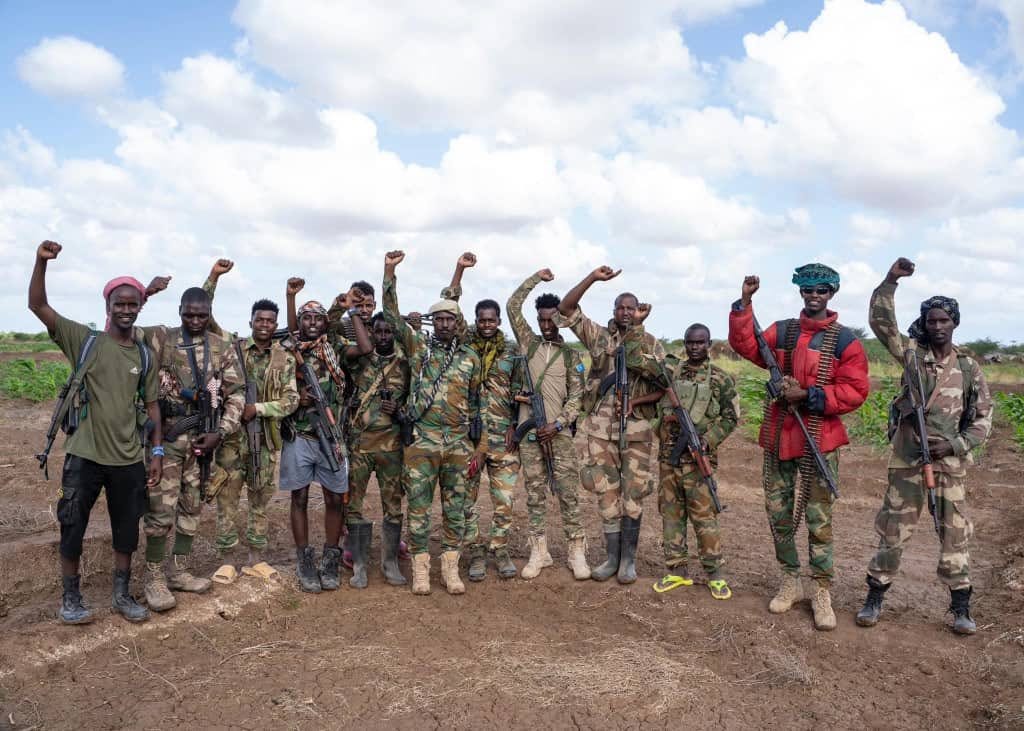The Sub-Saharan Security Review
17 June - 24 June
A Week of Lethal Attacks in Nigeria
The past week has seen a wave of deadly violence impact parts of central and northern Nigeria. One of the country’s most well-known armed actors, Boko Haram - officially titled Jama’tu Ahlis Sunna Lidda’awati wal-Jihad (JAS) - launched an audacious raid on a naval base in Baga, Borno, on 18 June.
Although the armed forces claimed the attack in the country’s northeast was repelled with minimal losses, unofficial sources suggest that the terrorists killed 10 soldiers and captured a significant amount of weaponry and equipment. Recent times have seen JAS overshadowed by the high levels of violence perpetrated by its adversary, the Islamic State’s West Africa Province (ISWAP), with which it shares its origins. Nevertheless, the attack underscored that the extremist group remains capable of complex operations.
Only three days later, the group is believed to have conducted a bombing at a fish market in Konduga, Borno. The region’s first suicide bombing of the year, carried out by a female assailant, killed at least 12 people and demonstrated that JAS may once again become a more prominent actor in Nigeria’s security landscape.
Elsewhere in the country, on the same day, a mob attacked a bus carrying Muslims to a wedding near Mangu, Plateau. The incident, which was reportedly religiously motivated, left 12 dead and 11 wounded - marking yet another act of targeted communal violence in the country’s Middle Belt. Completing the wave of major attacks was a deadly ambush in northwestern Nigeria on 24 June. In this incident, bandits led by the notorious figure Bello Turji purportedly killed 40 government-affiliated militiamen and four soldiers near Shinkafi, Zamfara.
Despite the geographical spread and varying motivations behind each attack, they are all linked to the same underlying grievances that are fuelling violence and conflict across the country. Indeed, Nigeria has struggled to sufficiently address competition over scarce resources, ethno-religious tensions, and limited economic opportunities - all of which drive groups and individuals to carry out violent acts.
IS Launches Deadly Attacks in Niger
Dramatically increasing the scale and tempo of its offensive actions over the past six months, the Islamic State’s Sahel Province (IS-SP) has demonstrated that its period of relative dormancy has been definitively concluded. With the group moving away from areas in Mali and Burkina Faso under the control of, or contested by, its extremist adversary Jama’at Nusrat al-Islam wal-Muslimin (JNIM), Niger is now overwhelmingly the primary staging ground for IS-SP’s operations this year.
On 19 June, IS-SP conducted one of its most significant attacks of 2025. According to the government, in the early hours of the morning, “hundreds” of militants attacked security forces in Bani Bangou, a town located close to the border with Mali. Official reports state that 34 were killed and 11 wounded, though IS Central later claimed “dozens” were left dead and that many others fled their positions.
Despite this devastating loss of life, it was the scope and complexity of the attack that will alarm Nigerien authorities. Indeed, militants reportedly also launched a rocket attack on a military base in Inates, located some 130 km from Bani Bangou, as a diversionary tactic. The distraction allowed IS-SP to not only overrun Bani Bangou’s military base - causing significant material damage in the process - but also the town itself.
On the same day as the attack in Bani Bangou, IS-SP reportedly massacred 71 civilians in the village of Manda, as they gathered for a religious sermon. The twin attacks further highlight the junta’s inability to stem Niger’s rising levels of insecurity - a key pledge it made upon seizing power just under two years ago.
The military regime also legitimised its power grab by claiming former leader Mohamed Bazoum was a puppet for French interests. During its relatively short tenure, the junta has been far more successful in decoupling Niger from its former colonial power than it has been in arresting militant violence. Recently announcing that it will nationalise Somaïr - a majority French-owned local uranium company - the government has further progressed toward this goal.
Somaïr once operated some of the country’s largest mines and was perceived by many as a symbol of France’s enduring domination over Niger. Nonetheless, in the face of mounting extremist violence, these popular policies may not be enough to maintain the military government’s long-term hold over the country.
Al-Shabaab Maintains Pressure on Federal Government
On 22 June, troops from the Somali National Army (SNA) and the African Union Support and Stabilization Mission in Somalia (AUSSOM) announced a major victory in the Lower Shabelle region. A three-day mission named “Operation Silent Storm” saw the two forces push al-Shabaab out of the strategic villages of Sabiid and Anole. According to an AUSSOM commander, militants had been using the two locations for several months to organise attacks, store weapons, explosives, and ammunition, and erect checkpoints along nearby roadways.
However, the mission came at a human and material cost. Al-Shabaab killed numerous soldiers, including seven Ugandan troops, and destroyed a strategic river crossing. Local sources report that SNA and AUSSOM troops will now seek to recapture two other nearby bridges in Awdhegle and Barire - the latter of which was partially destroyed by militants last week following heavy clashes with government-allied forces.
The government’s air of triumph was short-lived, with al-Shabaab conducting a major attack within 24 hours in the neighbouring Bay region. On 23 June, the Baay Burjeed military base - which connects the city of Baidoa to security positions in the region’s rural areas - came under heavy assault for the second time in months. The extremist group claims that it struck the base with a car bomb before overrunning it, killing and capturing numerous soldiers along with weapons and equipment.
With the Somali government and its allies largely limited to intermittent, localised operations in response to al-Shabaab’s persistent attempts to expand its influence in strategic areas, the two major clashes are broadly representative of the current conflict dynamics in Somalia. Yet while movements on the battlefield are the focal point of analysis, it is al-Shabaab’s “local governance structures and its manipulation of clan politics” that have enabled the success of its current campaign.
Struggling politically and militarily, it is difficult to see the Somali Federal Government returning to the advantageous position it once held following a major offensive initiated in August 2022 - even if the tempo of al-Shabaab’s current actions declines. These conditions cast an ominous cloud over the country as it draws closer to a critical 18-month period, in which three pivotal elections are scheduled to take place.
DRC Peace Proposal Leaves Key Questions Unanswered
On 18 June, representatives of the Congolese and Rwandan governments agreed on a draft proposal to bring an end to the ongoing hostilities. The announcement came after several days of “constructive dialogue regarding political, security, and economic interests" in Washington, mediated by both the US and Qatar. Barring any further issues, the deal - which focuses on the "disengagement, disarmament and conditional integration" of armed groups fighting in return for foreign investment - will be formalised on 27 June.
Taken at face value, the peace proposal between the DRC and Rwanda will ostensibly halt the fighting between the Congolese Armed Forces (FARDC), its associated forces, and the M23 / AFC rebel coalition. However, the ambiguity of the draft has raised significant concerns. Indeed, while the inclusion of provisions for a joint security mechanism to reduce the likelihood of future violence, pledges to allow refugees to return home, and promises to respect territorial integrity come as a major breakthrough, obstacles to long-term peace seemingly remain.
It remains unclear whether the agreement will require M23 to withdraw from the territory under its occupation, whether it will compel the rebel group to lay down its arms, or who will disarm the Democratic Forces for the Liberation of Rwanda (FDLR) - a group perceived by Kigali to be a "genocidal militia". A failure to address these crucial aspects may cause the deal to have limited impact on the region’s decades-long tensions.
Prolonged fighting between the conflict’s main belligerents would have broader ramifications for the regional security environment. In the first three months of the year, during which the Rwanda-backed M23 rebel offensive in the eastern DRC was at its peak, at least 2,500 people were killed by non-state groups, a figure Congolese officials claim is a significant underestimation.
A significant portion of these fatalities has been attributed to the Islamic State’s Central Africa Province (ISCAP), also known as the ADF. During this period, the limited attention and resources of the FARDC were channelled toward halting M23’s advances, allowing ISCAP to markedly increase its attacks on local civilian populations - underscoring the perils of a botched deal brokered by the US and Qatar.
Troaré Warns of Danger Posed by Mobile Phones
Last week, Burkina Faso’s leader, Captain Ibrahim Traoré, gave a speech to troops at a military camp in the country’s south. Depicting their fight as an existential battle against external forces, Traoré began his speech by attempting to boost the morale of his audience. As with many of his public addresses, Traoré framed his country’s battle within a broader historical context via frequent references to slavery, colonialism, and neocolonialism.
This portion of Traoré’s speech was neither particularly novel nor noteworthy, despite being framed as a significant event by Burkinabe media. However, the leader went on to scrutinise the use of mobile phones by troops on the front line, claiming that phone addiction was costing the lives of good soldiers. According to Traoré, soldiers are being distracted by their phones and sharing information online to the benefit of the enemy, with the leader making explicit reference to the pernicious impact of TikTok.
Traoré’s comments drew attention to what is an increasingly important, yet perhaps under-appreciated dimension of terrorism in the central Sahel, as well as the wider world more broadly. In the contemporary era, it would be difficult to find a soldier or militant without a mobile phone in their possession - even during combat. In countries like Burkina Faso, fighters use their devices to share messages and threats, film TikToks, or even document offensive operations for social media audiences.
However, as has recently been seen in Burkina Faso, where footage of ethnically-motivated violence committed by state forces gained international attention, mobile phones can also lead to negative publicity and fuel violence. A high-ranking member of arguably Burkina Faso’s main adversary, JNIM, also recently urged its members to minimise their use of mobile phones during attacks, arguing they should be conducting violence for religious reasons, not publicity.
Despite these warnings, there is little doubt that mobile phones will continue to play a central role in the Sahel’s conflict. For fighters on both sides, mobile phones are a cornerstone of efforts to gain and maintain public support and provide a link to the outside world. Traore’s warnings touch on a modern phenomenon that transcends physical, social, and contextual boundaries - one that connects fighters in the Sahel to civilians across the globe.






